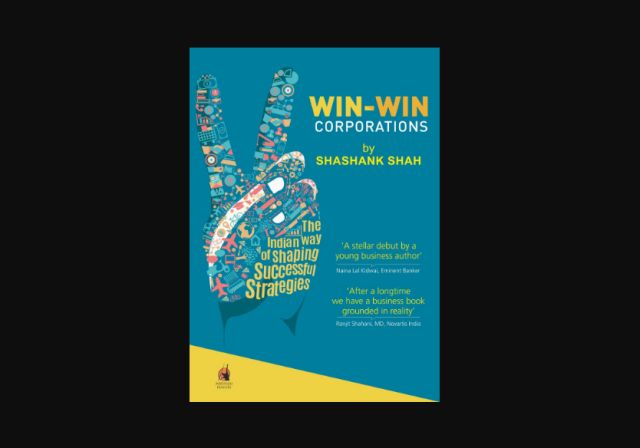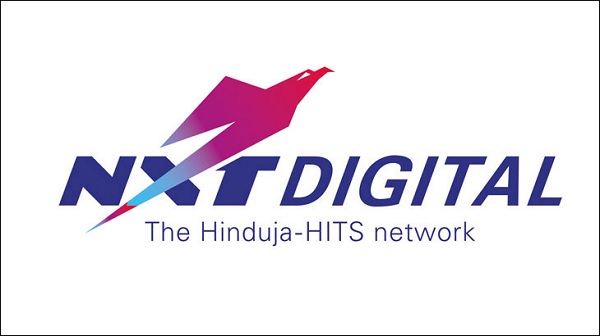
by admin | May 25, 2021 | Books
 New Delhi : Wade through a searing memoir and a chilling indictment of the Indian prison system; get an insight look into what motivates exceptional companies and how they are a cut above the rest; read a mystery story that revolves around diamonds worth millions; and flick through a book full of stories from Chennai.
New Delhi : Wade through a searing memoir and a chilling indictment of the Indian prison system; get an insight look into what motivates exceptional companies and how they are a cut above the rest; read a mystery story that revolves around diamonds worth millions; and flick through a book full of stories from Chennai.
IANS bookshelf has varied fare to offer to its readers for this weekend.
1. Book: Comeuppance: My Experiences in an Indian Prison; Author: James Tooley; Publisher: Speaking Tiger; Pages: 256; Price: Rs 299
In March 2014, James Tooley, a champion of low-cost private schools across South Asia and Africa, was enjoying a break in Hyderabad, where he reunited with his girlfriend Sara and niece Alissa. One evening he was visited by a friendly Deputy Superintendent of CID, who was concerned about alleged irregularities in the funding of his NGO, the Educare Trust. Tooley clarified that he had already given a statement to the CID and shut the NGO down years ago. However, not to be brushed off, the Deputy Superintendent returned to his hotel later that night — this time with a posse of subordinates to arrest him without a warrant.
Conditions in the prison were dire, and the jailers typically cruel and violent, but the other prisoners were extraordinarily kind. Appallingly, many had been inside for years, never charged with anything, often victims of police corruption and too poor to go to court.
In this disturbing yet gripping book, Tooley recounts his time in prison and his Kafkaesque struggle against Indian bureaucracy. Even after securing bail, he was subjected to humiliating interrogations, threats from armed goons and demoralising visits to the court.
A searing memoir and a chilling indictment of the Indian prison system, the police, and the judiciary which allows them discretion to act with impunity, “Comeuppance: My Experiences in an Indian Prison” is a timely reminder about the terrifying reality of 21st century India.
2. Book: Win Win Corporations; Author: Shashank Shah; Publisher: Penguin; Pages: 438; Price: Rs 599
Why did Ratan Tata decide to pay for all the victims of 26/11 whether injured in the Taj or anywhere else? Why did HDFC’s Aditya Puri insist that employees leave for home by 5.30 p.m.? How did HUL develop a cheaper, better product to beat its competitor, Nirma? What do Taj Hotels, HDFC, HUL, L&T and BPCL have in common? They are the win-win corporations. Based on over a decade of research, Shashank Shah takes a look at these truly outstanding Indian companies and how they do business.
Each of these companies has exceptional practices when it comes to stakeholder management. Whether the stakeholder is an employee, customer, investor, vendor or even society at large, these companies reveal how looking at everyone else’s interests doesn’t really mean compromising your own. Often, the two complement each other and that is what makes a win-win solution for everyone. The book provides an inside look at what motivates exceptional companies and how they are a cut above the rest. Full of fascinating anecdotes, leadership philosophy and background stories of the organisations, “Win-Win Corporations” is an inspiring read about what makes companies great.
3. Book: Diamonds Are For All; Author: Surender Mohan Pathak; Publisher: Harper Black; Pages: 400; Price: Rs 299
Taxi driver Jeet Singh is cruising for fare when a man being tailed by a bunch of goons blocks his way. Entrusting him with a briefcase full of secret, classified government documents to be delivered in lieu of a huge sum to a girl in Jogeshwari, he jumps off the moving taxi.
His body is found by the railway track in a Mumbai suburb the next morning, while Jeet Singh finds he has nobody to give the briefcase to: The girl died mysteriously the previous night. He opens the briefcase, and a free-for-all for diamonds worth millions is set into motion.
4. Book: Madras on my Mind; Authors: Chitra Viraraghavan and Krishna Shastri; Publisher: Harper Collins; Pages: 207; Price: Rs 350
Once upon a time by the sea, there was a story and another and another and some wandered into these pages to make up a city.
So meet, among others, a travel guide who falls for a French tourist, a rice merchant with Kollywood dreams, a god whose editor proves elusive, a portly musical lawyer caught in a noir plot, and a man in search of family in the Great Madras Flood.
Find yourself, among other places, in Town, at that gastronomic oxymoron, the Udipi cafe, in Velachery, looking for pot or maybe for love, on Kaanum Pongal day all across Madras, even in a fast car on East Coast Road, fleeing the city till it lures you back with its lovely lies.
It’s all here: The salt in the breeze, the eternal summer, the swing of the sea.
It’s Madras on your mind.
—IANS

by admin | May 25, 2021 | Corporate, Corporate Buzz
 New Delhi:(IANS) London-headquartered business conglomerate Hinduja Group on Wednesday made its ‘Make in India’ push as it launched its digital TV distribution business, which will work on the headend-in-the sky (HITS) technology and entail a minimum investment of Rs.5,000 crore, under the brand name of Nxt Digital.
New Delhi:(IANS) London-headquartered business conglomerate Hinduja Group on Wednesday made its ‘Make in India’ push as it launched its digital TV distribution business, which will work on the headend-in-the sky (HITS) technology and entail a minimum investment of Rs.5,000 crore, under the brand name of Nxt Digital.
HITS is a hybrid of multiple-system operator (MSO) and direct-to-home (DTH) technology. In case of an MSO, the content is beamed through a fibre network while in case of HITS, it is beamed through a satellite.
“Keeping in line with the Prime Minister’s (Narendra Modi) initiatives of Digital India, Skill India and Make in India, the launch of HITS will connect India digitally and enable thousands of entrepreneurial cable operators to make a transition from analog to digital across an estimated 120 million homes,” said group chairman Ashok Hinduja.
“All the application development for the Nxt Digital platform has been designed and built 100 percent in India and all the set-top boxes (STBs) are also being made in India in partnership with ABS manufacturers,” he added.
The company has also has tied up with training institutes to train and equip youth in smaller towns and markets for supporting data management in its operations and create a pan-India network of trained service technicians.
The approximately-$25 billion group had applied for the licence via its investment arm Grant Investrade Ltd three years back and the project is being headed by Grant Investrade’s managing director Tony D’Silva.
According to the Hinduja Group, the new service will aid cable operators in the country to make the transition from analogue to digital (DAS), offer specialised value-added-services, and allow addition of local cable channels on the new platform. “The investment in the business might just go up by another Rs.5,000 to Rs.10,000 crore depending on the progress of the HITS technology,” Hinduja added.
The DAS is a part of the cable TV digitisation policy which was notified by the government in 2011. Under this policy, it is mandatory to access television signals via a set-top box.
Currently, India’s digital TV transition is at 40 percent with 140-150 million pay-TV households already subscribing to digital platforms on a regular basis, according to the estimates from industry analysts. Hence, the Hinduja Group has the opportunity of targetting around 80-90 million homes (60 percent)largely served by thousands of small cable systems outside the main cities.
“Our facility has been designed and purpose-built to provide a variety of services including over 500 TV channels and services in top class MPEG-4 digital quality to LMOs (Last Mile Owners) and MSOs (Multi System Operators),” said D’Silva.

by admin | May 25, 2021 | Corporate, Corporate finance, Opinions

By K R Sudhaman*
Insurance industry in India is a $250 billion industry, equivalent to four-fifth of the country’s foreign exchange reserves. But its growth has been hampered because of the unusual delay in the passage of Insurance amendment bill, which 10 years after it was conceived was passed by Parliament recently.
Life insurance has potential to grow at 12 per cent annually and general insurance by 22 per cent in the next ten years as insurance penetration is one of the lowest in the world. But what was standing in the way was infusion of fresh capital, particularly foreign, which was possible only if the foreign direct investment cap is raised. The Insurance amendment bill has precisely done that by raising the FDI cap to 49 per cent from the present 26 per cent.
The last few years have been challenging for the industry with declining growth in life insurance premiums and significant challenges in non-life profitability. This was driven by a combination of macro-economic factors and structural challenges inherent in the insurance industry. Confederation of Indian Industry is of the view that this can be reversed by concerted action by industry players. The Insurance amendment bill also brings in regulatory reforms.
A CII report prepared in partnership with global consultancy firm McKinsey says the Insurance industry in India is at an inflexion point in its development. With Government’s reformative drive and resolve, the industry can jointly achieve the vision of building a customer centric and value-creating industry over the next decade. The inclusive growth will enable India to become a global top 10 insurance market with a total Gross Written Premium size of $250 billion.
India had very poor penetration of life insurance cover accounting for less than one per cent of population. With the opening up of the sector to private players and foreign direct investment up to 26 per cent in the late 1990s, the life insurance cover has more than trebled to 3.7 per cent of the population by 2012. With FDI cap being raised up to 49 per cent now, the life insurance cover will nearly double to 6 per cent of population in the next five years and to more than 10 per cent by 2025. It is also not true to say that state-owned Life Insurance Corporation of India’s growth has been stunted with the opening up. In fact opening up has helped LIC as new technologies and methods have come into the sector now and competition had made the state owned organization more aggressive. LIC’s annual premium on life insurance has increased from Rs 19,000 crore at the turn of the century to 3.64 lakh crore by 2012
To achieve the targets set for next five years, India needs nearly Rs 50,000 crore of additional capital in the sector, of which nearly half would have to come by way of foreign investment.
The Life Insurance industry has around 380 million policies in force and pays claims for around 12 per cent of the total deaths in the country. It has a critical role given the limited social security avenues available and has also played a crucial role in inculcating the savings habit among a large mass of the population which has limited access to other forms of savings, the CII study says.
Over the last five decades, the industry has developed significantly on dimensions related to access, efficiency and structure. However, much of the gains of the first 10 years of insurance sector liberalisation have been wiped out in the past 4 years as the industry has been impacted significantly by macro-economic, regulatory and internal structural challenges. The industry is at the crossroads today, with a real risk of losing its relevance if the status quo continues. The insurance reform bill has therefore come at an appropriate time.
Take for instance health insurance cover. The amount of money individuals spent on medical treatment totaled to around Rs 3 lakh crore annually in India, of which only Rs 20,000 crore is through insurance cover. The rest Rs 2.8 lakh crore is spent on medical treatment particularly by the poor and lower middle class through their hard-earned savings or borrowing at high cost or by selling family silver. The general insurance cover, of which health and motor vehicle insurance formed part of it accounted for only 0.7 per cent of the population. It is expected to double to nearly 2 percent in the next five years. With life and general insurance cover doubling in the next five to 10 years more than 700 million lives can be covered providing much needed social safety net hitherto not available to vast majority of the population. With Jan-Dhan Yojana, which has a mandatory accident insurance cover, can help in insurance penetration. Crop insurance is yet another area where there is a lot of potential.
The General Insurance industry has witnessed a strong performance with 18 per cent growth between 2005 and 2014 and is now a $13 billion industry breaking into the top 20 industry globally. It currently provides cover of more than $ 17,000 billion.
But home insurance penetration is less than 1 per cent; there is significant under-insurance in segments such as two-wheelers and personal health; corporate (property and indemnity), SME and rural risk coverage are substantially lower than global benchmarks. These are areas in which there could be significant growth in the next 5-10 years.
The government sponsored Rashtriya Swasthya Bima Yojana (RSBY) provides coverage to the population below the poverty line. The health insurance cover provided to poor in Tamil Nadu has worked wonders. It has not only helped poor get treatment but also helped government earn money through insurance claim. The Tamil Nadu government’s popular health card scheme that provided insurance up to 2 lakh per family or individual has helped General Hospital in Chennai alone earn Rs 18 crore last year by way insurance claim for treatment of poor people covered under the scheme. This scheme could win-win for both government and poor people.
The government has recently announced that it would promote universal health coverage. There are several learnings from other markets as well. In Brazil 40 per cent of the spending on health is through health insurance unlike in India where it is just 6-7 per cent. Health insurance has potential to penetrate to more than 75 per cent of 1.2 billion population in the country.
The Insurance Amendment Bill, passed by parliament also safeguards Indian ownership and control and provided Insurance regulator, Insurance Regulatory and Development Authority of India (IRDA) flexibility to discharge its functions more effectively and efficiently. The Bill amends the Insurance Act, 1938, the General Insurance Business (Nationalization) Act, 1972 and the Insurance Regulatory and Development Authority (IRDA) Act, 1999.
The amended law, which replaces an ordinance enacted in December 2014, also enables foreign reinsurers to set up branches in India including top global re-insurance company Llyods.
It is not India alone opening up its insurance sector. Many countries allow foreign direct investment in the insurance sector as domestic companies do not have the wherewithal or resourced to meet insurance requirement of the entire population. Also reinsurance is critical for sharing the risk cover involving billions of dollars in the event of natural calamities and large accidents. In US, UK, Japan, France and Germany, FDI up to 100 per cent is allowed in the sector. Even in China up to 50 per cent FDI is allowed. In case of Indonesia it is 80 per cent and Malaysia, it is 51 per cent. Even after the opening up only up to 49 per cent FDI is allowed in India.
Apart from deepening penetration, the opening up of insurance and pension sector helps Indian government and companies to access long-term funding for infrastructure projects, which require investment up to $1 trillion in the next five years. Only pension and insurance funds can provide long-term capital of 10-30 years duration as only they have access to such long term deposits. Unfortunately in India commercial banks fund infrastructure projects because access to long-term capital is now limited. Banks by nature get deposits short-to-medium term and hence lend short-to-medium term. Now by lending long term, banks in India have asset-liability mis-match. Access to pension and insurance funds will make it easier for long term funding of infra projects. Foreign insurance players operating in India will now provide access to pension and insurance funds of their parent companies. The US and Canadian pension and insurance funds are waiting to invest their huge capital in countries like India this insurance reform will pave the way.
*K R Sudhaman is a freelance Business Journalist and is a former Economics Editor, Press Trust of India, TickerNews and Financial Chronicle.

by admin | May 25, 2021 | Uncategorized
New Zealand’s government has stepped up efforts to contain the fallout from a scare over contaminated products made by dairy giant Fonterra.
Officials have been sent to Fonterra facilities in New Zealand and Australia to oversee the flow of information.
Fonterra said on Saturday that batches of products, including infant formula, contained a raw ingredient tainted with a bacteria that can cause botulism.
New Zealand Prime Minister John Key has promised a “forensic” investigation.
“The biggest and most important thing we can do is, as part of that full review, we are open and honest about what went wrong and demonstrate that there’s change,” Mr Key was quoted as saying by local media.
He criticised the company on Monday, saying he did not understand why this issue had not been flagged earlier.
Fonterra is the biggest company in New Zealand and is responsible for almost 90% of the country’s milk production.
Dairy exports account for about a quarter of New Zealand’s export earnings and the dairy industry contributes about 7% of the country’s gross domestic product.
Shipment blocked
Fonterra, which apologised on Monday for the problem, says that there has been no known illnesses caused by the tainted products.
It says the bacteria came from a dirty pipe at a processing plant for whey protein concentrate.
The company has issued a recall and countries, including China, have implemented import bans on the raw ingredient, whey protein concentrate.
Infant formula makers Danone and Abbott Laboratories, which use Fonterra ingredients or sell milk produced on Fonterra production lines, said they had issued precautionary recalls.
On Tuesday, Chinese authorities ordered Abbott to recall some of its products. Infant formula safety is a sensitive topic in the country where melamine tainted milk killed six children and made 300,000 ill in 2008.
Overnight a shipment of possibly contaminated whey concentrate was intercepted while on its way to Australia, New Zealand’s trade minister said.
Economic Development Minister Stephen Joyce added that data provided by Fonterra initially had been incorrect, which led to confusion and meant product recalls in China and other countries.
However, he said about 90% of the contaminated product had already been located and that using Fonterra’s tracking records the government was hoping the rest would be found by Wednesday.

by admin | May 25, 2021 | Uncategorized
UK Asset Resolution (UKAR), the government-owned company incorporating Northern Rock (Asset Management) and Bradford & Bingley, paid back £1.9bn to taxpayers in the first half of 2013.
It said the amount included £1.3bn of loan repayments in the first half of 2013.
The firm did not make any further provision for PPI mis-selling.
It also saw profits boosted by a drop in customers who had fallen behind on their mortgage payments.
Underlying profit before tax for the first half of 2013 increased from £481.4m in June 2012 to £528.8m this year.
UKAR said the main driver for this was lower arrears and, as such, a reduced loan impairment charge.
The company saw the number of mortgages three or more months in arrears fall by 17% to 21,332 since the start of 2013.
It now has almost 584,000 customers, with 565,000 mortgage accounts and 212,000 unsecured personal loan accounts.
The firm said the majority of these loans continued to perform well, with more than 90% of mortgage customers up to date with their mortgage payments.
“However, we do have a significant number of customers who are finding it difficult to meet their repayments,” the company said.
“In those cases, we work closely with customers to offer a range of solutions to help them manage their circumstances.”
The number of properties it repossessed fell from 3,871 in the first half of 2012 to 3,550 in 2013.
UKAR added there were signs that a modest recovery of the UK economy was emerging, both in the wider economy and in the housing and mortgage markets, but added it was aware that the finances of many households remained under pressure.
The company was formed in 2010 to integrate the mortgage operations of Northern Rock Asset Management (NRAM) and Bradford & Bingley (B&B) following their nationalisation.
Northern Rock plc was sold to Virgin Money in 2011.

 New Delhi : Wade through a searing memoir and a chilling indictment of the Indian prison system; get an insight look into what motivates exceptional companies and how they are a cut above the rest; read a mystery story that revolves around diamonds worth millions; and flick through a book full of stories from Chennai.
New Delhi : Wade through a searing memoir and a chilling indictment of the Indian prison system; get an insight look into what motivates exceptional companies and how they are a cut above the rest; read a mystery story that revolves around diamonds worth millions; and flick through a book full of stories from Chennai.



